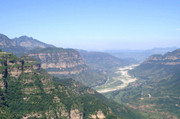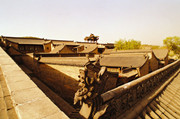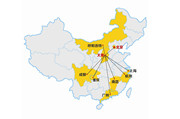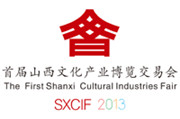Date with destiny
By Yu Fei ( China Daily )
Updated: 2009-12-07
Many archaeologists have also questioned He's theory.
But He persisted and eventually found a new observation point. Further digging revealed traces of what is believed to be the original observation point of 4,100 years ago: a rammed earth base 25 cm in diameter, with its center just 4 cm from the new point used by He.
The discovery of the original point and more than 70 rounds of observations provided evidence for He's theory, which won recognition in archaeological and astronomical circles.
Scientists from the National Astronomical Observatories and the Institute for the History of Natural Science under the Chinese Academy of Sciences showed great interest in He's study, and jointly started further research this year to find out whether the ancient observatory had other astronomical functions.
He's discovery has also roused interest in archaeo-astronomy, a little understood field in China. He believes Chinese ancients were very advanced in astronomy, and other relics related to astronomy have probably been neglected.
"My theory about the astronomical function of the site was like a fantasy at the beginning. But you cannot bring forth new ideas unless you think wide," He says.
"I'm often tortured when I get nothing. I feel like I'm trekking through sand with no end. When I'm exhausted, I suddenly find some shells of rare beauty. All the toil, tiredness and monotony are rewarded."

China's archaeology programs became isolated from Western influences from 1949. Like other sciences, archaeological studies in the Soviet Union became the model for China. Unfamiliar with the Western theories, previous generations of Chinese archaeologists walked a road of their own, and focused on verifying recorded history.
Archaeology ground to a halt during the "cultural revolution" (1966-76). However, it has blossomed since because the government regards its discoveries as an important window on China' cultural development.
He was born in Beijing, where the ancient temples and pagodas fascinated him in his childhood. It was a time of great discoveries, such as the terracotta warriors and horses, which were found in 1974.
He studied archaeology at Peking University and gained a master's degree in the Xia, Shang and Zhou dynasties, China's Bronze Age. He then gave up the opportunity to work in Beijing and went to work at the Jingzhou Museum in central China's Hubei province, because he wanted to go to the frontier of archaeological excavation.
Life at an archaeological site is rough: Good food is scarce and a bath happens once a week in town. There are no weekends or holidays during the excavation seasons, and rest is taken when it rains. He recalls one rainless period of more than 40 days.
Most of the time, He's work is monotonous: digging, clearing, and drawing diagrams. The work in the storeroom is even more exacting. He sometimes has to piece together thousands of broken pottery pieces. The success rate is low.
Since the 1980s, Chinese archaeologists have often had to rush to construction sites to search for the remains of ancient civilizations before the bulldozers destroyed them.
They also have to race against tomb robbers. Hubei province is home to many tombs of the Chu kingdom of the Warring States period (403-221 BC), but looters have plundered an estimated 90 percent of them.
"I don't like this kind of excavation. It distresses me to see those precious antiques being unearthed, but we don't have any good method to preserve them. Many lacquerware items and silks are destroyed," says He.
"Later generations will appreciate the bounty of cultural relics found in our time, but they will also criticize us for being unable to protect them well."
The new generation of archaeologists like He tries to keep up with trends in the international archaeological community.
He attended the Department of Anthropology of San Francisco State University as a visiting scholar from 1995 to 1996, studying carved symbols with American scholars and participating in an excavation at a small Indian relic site.
"I benefited a lot from the year in America. Archaeology is no longer restricted to archaeologists in the United States. People from other fields, such as doctors or computer experts, also participate in the research. They are more open-minded, and are always willing to try something new, and bring vitality to the development of archaeology. But China still lacks this kind of innovation," He says.
In his eyes, the 60 years since the founding of the New China have brought greater changes than 2,000 years of feudal history.
He believes archaeological research should serve the social reality. "We should find objective laws formed over thousands of years, and these objective laws will direct our social development in the future."




